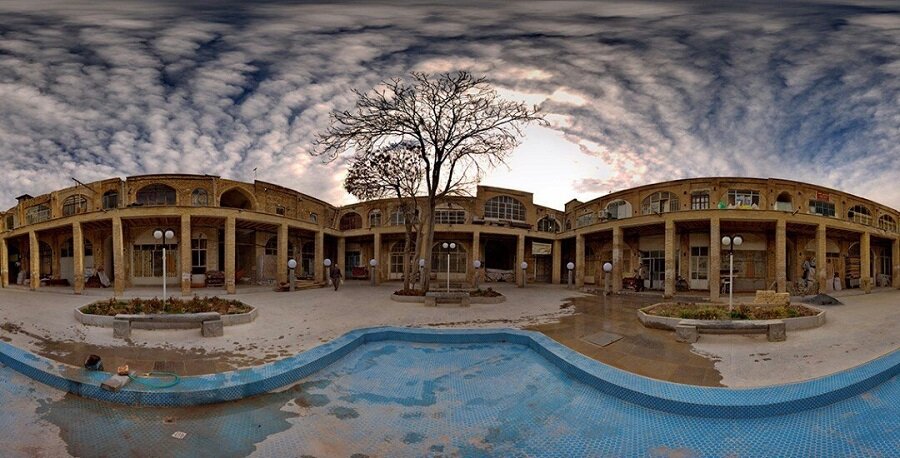Parts of Arak historical bazaar being restored

TEHRAN – Parts of the historical bazaar of Arak in central Markazi province are being restored, the deputy provincial tourism chief has said.
The project includes replacing worn-out materials and repairing rooftops, Hossein Mahmoudi explained on Tuesday.
A budget of 310 million rials ($1,100) has been allocated to the project, he noted.
In 2021, the tourism officials of the province announced that Iran is preparing a comprehensive dossier for the historical bazaar of Arak to be submitted to the United Nations Educational, Scientific, and Cultural Organization in near future.
Covering an area of 14 hectares, the bazaar was built during the reign of Fath Ali Shah, a Qajar monarch who ruled from 1797 to 1834, by Yusef Khan Gorji and is considered the main core of the city.
In winter, the air inside the bazaar building is warm and pleasant due to the special architecture, while in summer it is quite cool.
Markazi province is considered the industrial capital of the country. It is rich in natural, historical, cultural, and religious attractions.
Hand-woven carpets and kilims, made in its cities including Farahan, Sarugh, Lilivan, Senejan, and Vafs are known internationally.
Bazaars in Iran
A bazaar is, originally, a public market district of a Persian town. The bazaar of the ancient Islamic world was vividly described in the folktales of “The Thousand and One Nights”. Located in a distinct quarter of a town, it was bustling and noisy by day in contrast to the quiet residential quarters. Access was forbidden after sundown.
Distinctive architecture characterized some bazaars—such as those built at Kashan and Isfahan in Iran in the 17th century. They were usually roofed for protection against the hot desert sun, either with a single roof, with individual vaulted cupolas or domes, or with awnings.
From another point of view, bazaars are also synonyms for foods, with their unmissable colorful stalls of vegetables, herbs, and spices. Yet, most of these ingredients might be mysterious to a foreign eye. Teahouses help punctuate the walk and a traditional restaurant is a perfect place for lunch.
Browsing through a traditional bazaar may provide new experiences and fresh points of view on the ancient land. Such excursions can be made either in person or by “off-the-beaten-track” tours. Not only it’s an opportunity to discover dozens of unique local ingredients, but it’s also a chance to taste street foods and delicacies, in some traditional bakeries known only by locals and shopkeepers.
People watching and even mingling with them in the bazaars is one of the best ways to take the pulse of the country. Bazaars have traditionally been major economic and social centers in any Iranian city.
ABU/MG

Leave a Comment